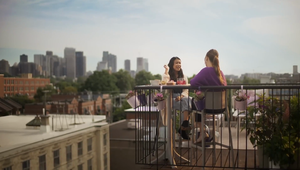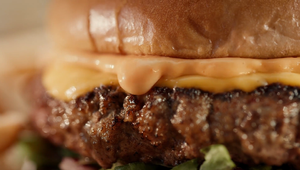
Media Matters: Why “Better Briefs Always Result in Better Work” for Pranav Pandit

Over the course of Pranav Pandit's career, he has transformed brands such as Gatorade, State Farm, REI, Clorox, Morton Salt, and the US Marine Corps via creatively-driven traditional media techniques and ground-breaking digital disruption. As a senior leader, his proven track record for inspiring siloed groups to come together as unified, best in class teams has resulted in award-winning marketing work heralded for creativity and effectiveness.
LBB> What was it about the world of advertising media that pulled you in? What did you do before you got into media?
Pranav> Back in my high school days when I started to develop the ability to have an informed opinion, I was fascinated by the creativity and influence that a single TV commercial could have and started picking my favourite ones. From the cola wars to the fast-food battles, and 'Be Like Mike'...I thought, “I could make those!” From there I went on to earn a marketing degree from The University of Texas in Austin.
LBB> Over the course of your career, what have been the most significant changes you’ve seen in the media side of the industry?
Pranav> I’m going on 25 years in the biz so I’ve seen a lot. The most significant has been the rise of digital media in all its forms. I’ve seen the birth and maturation of social media, gaming, programmatic, and more. A more practical answer, however, would be the use of data to drive all stages of the media planning process. But mentioning video games is way cooler.
LBB> What was your first job in the media industry and give us a taste of the path that your career has been on?
Pranav> My first media job was my first job out of college as an “inside sales representative” for a very large digital ad network. Even back then (we’re talking late 90s), it was easy to see that anything related to digital was the path to take. Soon after leaving that role, I landed on the agency side planning digital media and never looked back.
LBB> In more recent years, which projects or clients have proven to be the most stimulating and satisfying to work on and why?
Pranav> In my role as chief media officer for dentsu X, I have the honour and privilege of working on projects that impact our entire agency while also being able to focus on individual client challenges at the same time. The variety is amazing, and I take a lot of pride in the macro/micro nature of it all.
LBB> In media, an understanding of human behaviour is so important - what are some of the most interesting changes you’re seeing in terms of how we behave with and interact with media?
Pranav> We live in truly unbounded times where almost anything can be media. Mobile devices, computing power, AI and more have expanded what we consider the creator economy to be. Everyone is consuming AND creating so we encourage brands to develop media strategies beyond simple measures such as reach that meet audiences throughout their journey and ecosystem.
Brand safety is more important than ever and consumers and campaign groups are increasingly holding brands to account for the media they choose to spend on - what are your thoughts on this phenomenon and how are you and your teams navigating it? As noted, “everything is media,” which presents an ongoing challenge to place media in brand safe spaces. However, the key to our ability to do that is client input and expectation-setting as early as possible. I’ll die on this sword: better briefs will always result in better work.
LBB> What do you think are the most pertinent debates happening in the media field right now?
Pranav> This is an obvious answer and maybe cliché at this point, but the debate about the use of artificial intelligence is noteworthy. It’s especially interesting when it comes to creative design and production. We all want things done better, faster and cheaper which AI can assist with under regulation.
LBB> As an industry, we’re obsessed with the new - and for good reason, it’s often where the money lies! But are there any more traditional forms of media that you think we’re sleeping on a bit or that you think still make a big impact when it comes to connecting with consumers?
Pranav> Absolutely. Two that come to mind are out of home and terrestrial radio. Some of the most creative campaigns I’ve ever seen have been out of home campaigns be it unique billboard creative, street level experiential campaigns or the wave of new digital offerings. And creative teams LOVE dreaming up out of home.
Terrestrial radio is also a medium that maintains massive scale, but has lately been overshadowed by podcasts. All of audio is interesting but there’s so many unique strategies to be had with terrestrial. I’d love to dream up a media plan that could only include out of home and radio!
LBB> Who are your media heroes and why? And what sort of media do you enjoy?
Pranav> I submit this: Some of the most inspiring people I’ve worked with in media have been creatives. It sounds like I’m trying to be clever but honestly the best media campaigns I’ve ever run have been a result of a very close partnership with the creative team. When they try their best to understand what my team does and my team tries their best to understand what they do... dare I say, magic happens.















